
As a part of research I have been conducting around public spaces within Downtown Vancouver, I was curious to look into Vancouver’s history, and began my search in the Vancouver Archives. The archives were filled with an assortment of documents, plans, and images of the city, but what particularly caught my interest were a collection of photos capturing public plazas during the 1970s and 1980s – stills taken of people using these plazas and a variety of public spaces around Downtown. As shown in the photo essay below, many of these spaces still exist in the city today and one can’t help but wonder if they are still as popular.
I enjoy archival photos because they vividly depict the physical landscape that once existed, as well as the many lives and people lived within their respective settlements. With Vancouver’s downtown public plazas, one sees people congregating around and within them, as an essential part of civic life. Each plaza either provides public art, green space, public seating, or all three, and allows people to linger, read books, eat lunch, enjoy a coffee, or talk to one another freely.
The photos are a reminder of how public spaces should be available for everyone to use and enjoy. This sparks reflection on how many downtown public plazas and spaces are being used like this today. Over time, the streets of downtown have changed dramatically, through rezoning and site redevelopment, sacrificing many public spaces along the way. Should this really be the case?
I recently took a walk around Downtown and visited some of the public sites captured in the archives. I know Vancouver’s weather is not the best year-round, however I could not help but notice a lack of people taking advantage of these spaces. Public plazas don’t appear as alive or thriving as they used to be. Is it because people have moved on and found new public spaces that are more attractive and appealing? Or could it be that these spaces no longer appear open to the public, but are increasingly becoming private spaces?
These are some of the questions I ask myself and continue to consider as the city transforms. It was an eye opening experience to take a look back and see how public plazas were built in the past and used by the public. We should all make it a goal to consider how public spaces can be protected in the city, and how they can be revitalized as part of the city’s future. Simply put: people need public spaces.
***
Isabelle Kim is a Vancouver-based Communications & Design B.A. from SFU, involved in past public space and placemaking projects. She is an urban planning enthusiast obsessed with urban design and architecture.

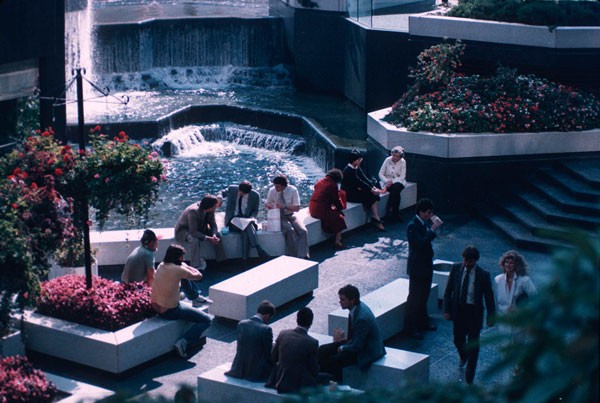
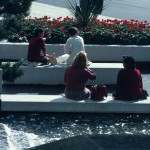
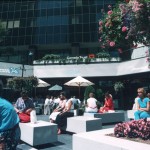
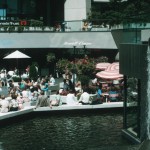
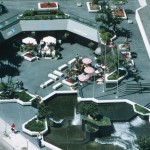
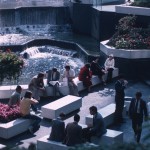
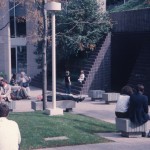
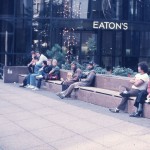
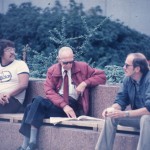
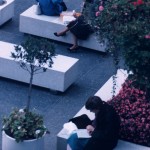
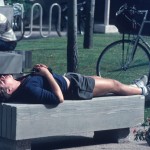
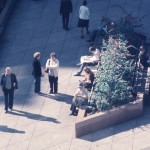
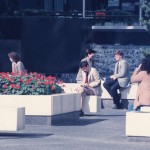
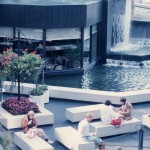
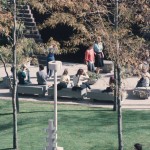
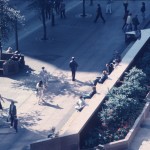
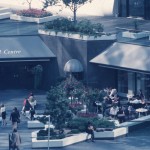
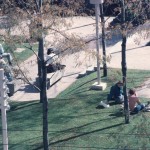
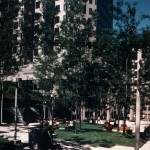
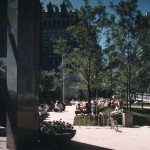


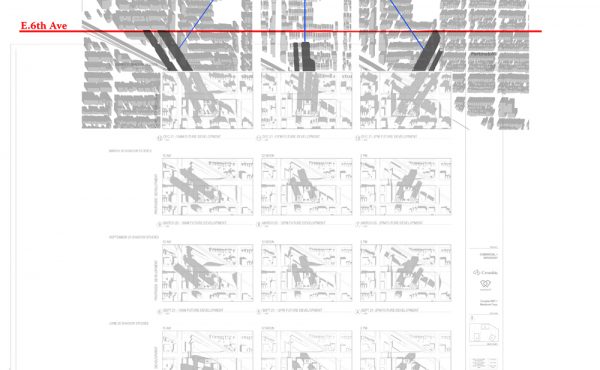
2 comments
It is clear that the archive photos were all taken at the height of summer – when it is warmest and people are out enjoying the sunshine. A tour of the same places in early spring won’t get the same number – but given the current warm spell and good forecast you might get some more today (April 20, 2015). But my photostream shows plenty of people in Vancouver’s public spaces https://www.flickr.com/photos/stephen_rees/
We’re glad you found these interesting. In the next couple of weeks (depending on how our system upgrades go), we’ll be adding some comments to the descriptions of photographs that are from a slide show. Roughly, CVA 784-01 through CVA 784-118 will have remarks that explain why the image was taken. For example, for CVA 784-084 (Victory Square aerial), the remarks will be: “Site is designed in two parts as a park and as a memorial contrast between natural landscape and a more formal man-made area. Upper area strongly enclosed by trees while northern part is open to street.”